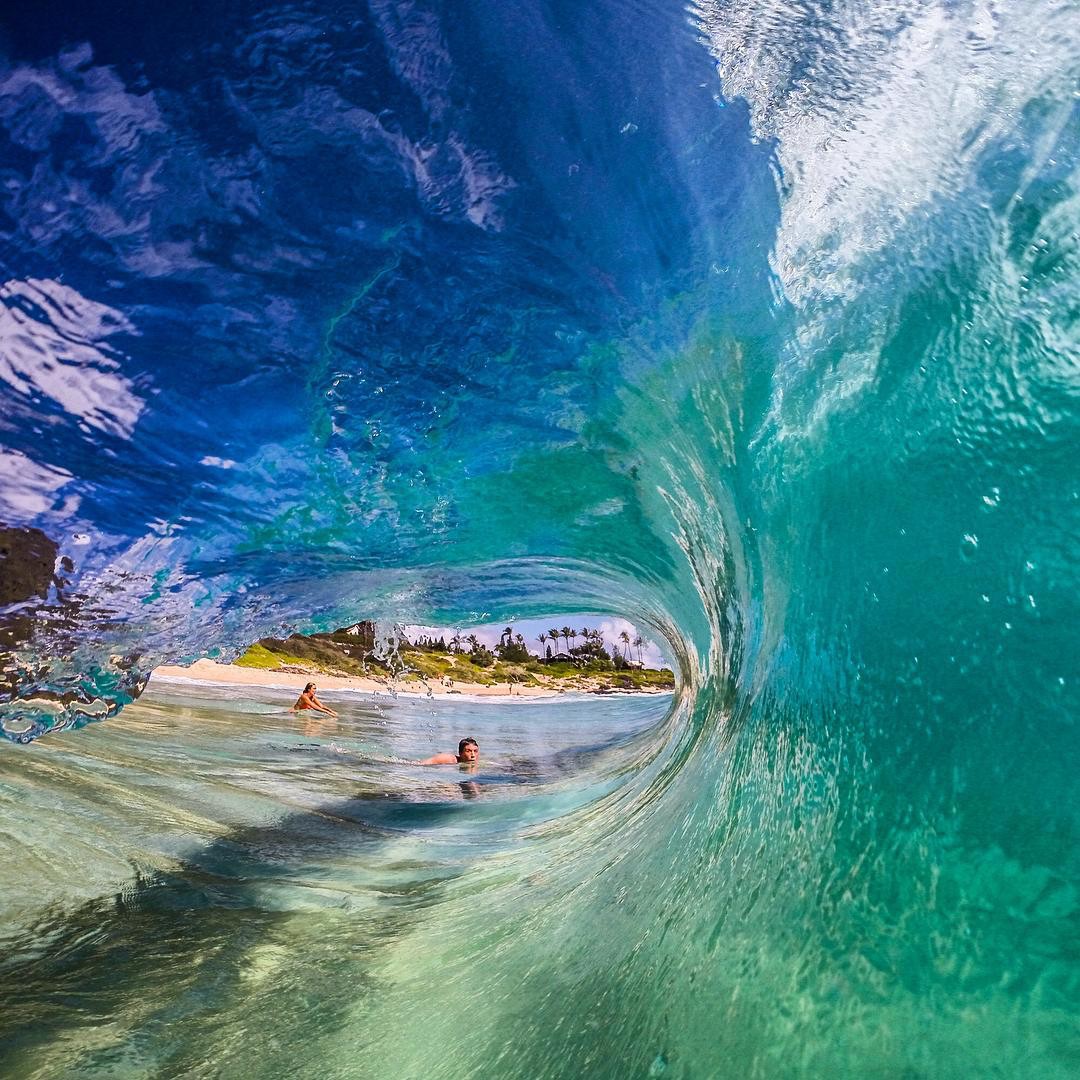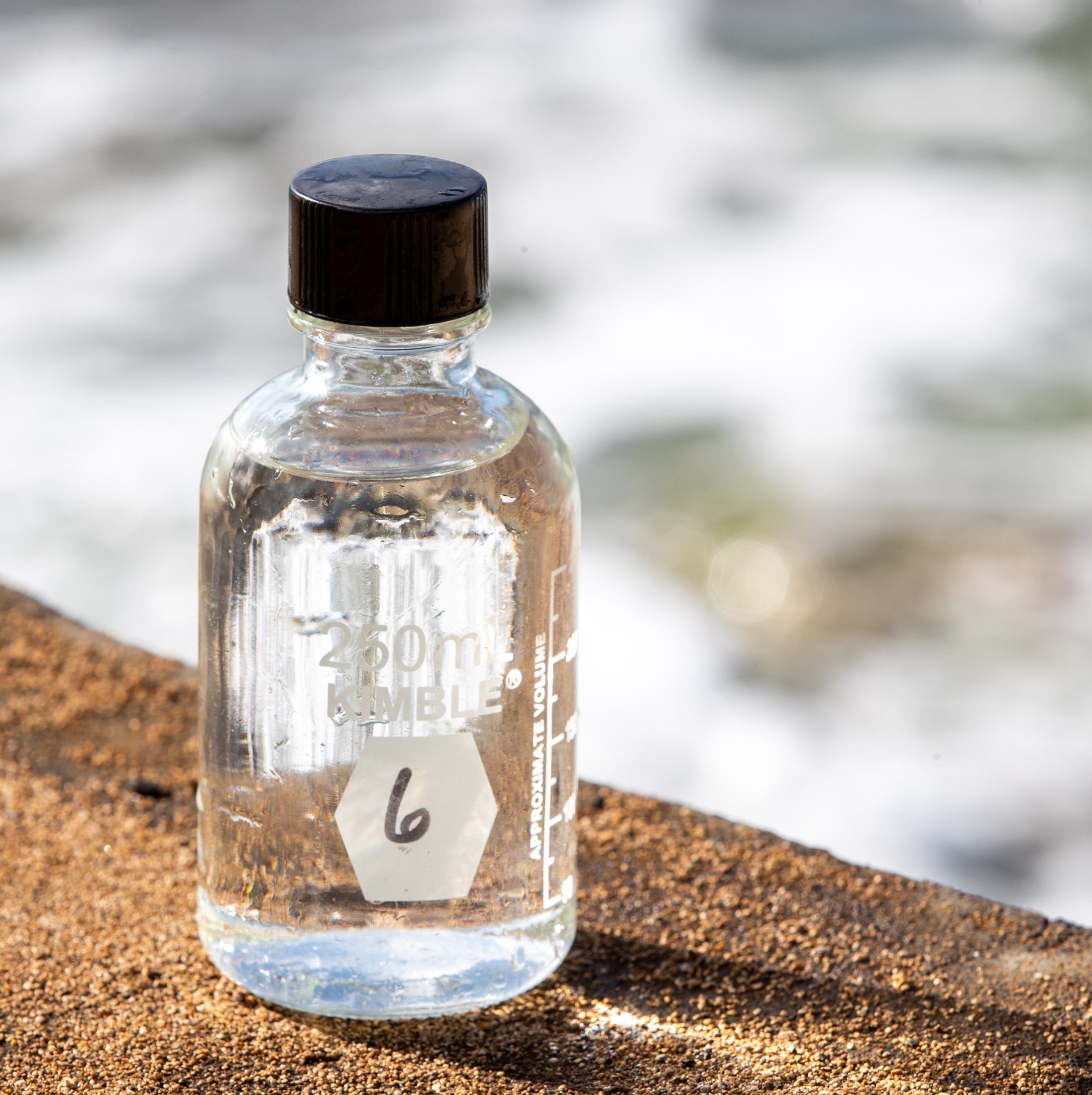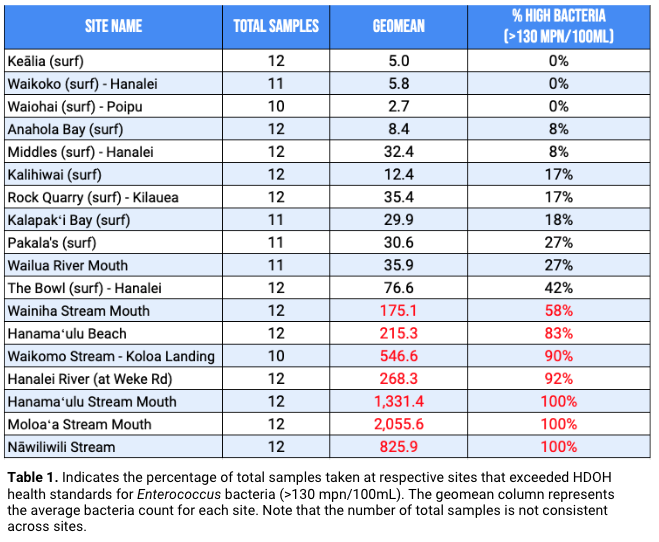
2023 Kauaʻi Water Quality Report
Surfrider Foundation believes that all people should have access to water quality data. Our BWTF program empowers the local community to make informed decisions about where it is – or is not safe to swim.
2023 Overview
In 2023, trained BWTF volunteers sampled 18 sites monthly across Kauaʻi. 2023 results are consistent with water quality trends from previous years. Across Kauaʻi, sites located at stream mouths, beaches with freshwater outlets, or in bays without much circulation are typically characterized by higher bacteria levels than at ocean sites with better circulation and more mixing. Streams located at many of the most contaminated sites could also carry runoff from cesspools and other pollution sources in the watershed such as animal waste from pets, agriculture, and wildlife.
Of the 18 sites regularly tested in 2023, seven exceeded health standards over 50% of the year.


What did we find?
Of the 18 sites regularly tested in 2023, seven sites had over 50% of their samples exceed state health standards. All of these sites showed similarly high bacteria levels in 2022. Sites like Nāwiliwili Harbor and Hanamaʻulu Stream have not met state health standards since 2016 and 2011 respectively. These sites are not safe for recreation and a sign is thus needed to warn the families with children that regularly swim and play in the mouth of these streams
Why Are Kauaʻi Streams So Polluted?

Stop Sewage Pollution
As part of its recently launched STOP Sewage Pollution program, Surfrider Foundation encourages homeowners to improve water quality by following these 8 simple steps:
- Convert your cesspool
- Share your knowledge about the impacts of cesspools on water quality
- Inspect and pump your septic tanks and cesspools regularly.
- Don’t use septic additives.
- Only flush the three P’s (pee, poop and toilet paper)
- Don’t pour cooking grease or oils down the drain.
- Conserve water inside your home.
- Soak up the rain and reduce runoff by directing roof downspouts into a rain barrel or vegetated area.
Community members are encouraged to check water quality results posted online before they head to the beach at bwtf.surfrider.org/explore/44. Current and historic data are available.
